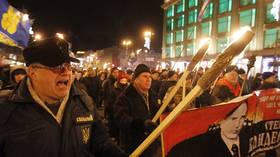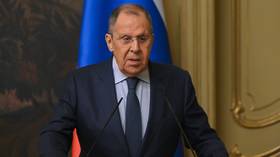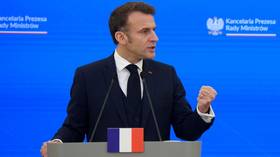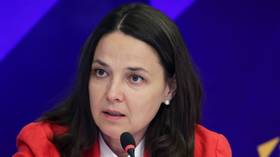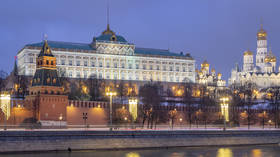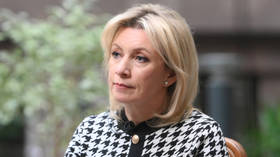Russia’s national security strategy for 2016 in 9 key points
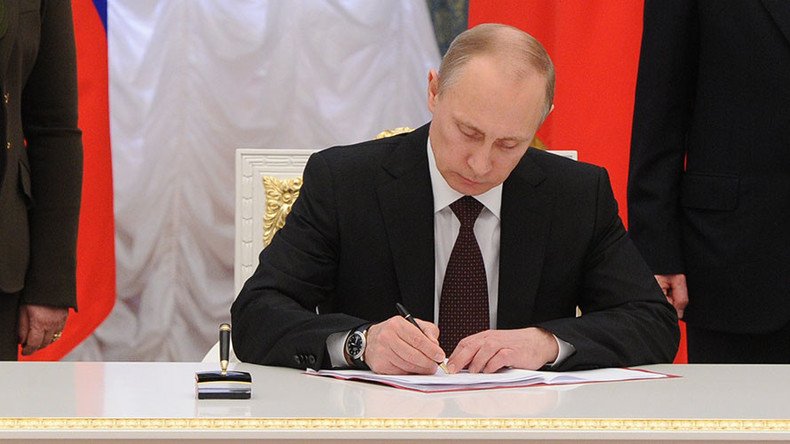
President Vladimir Putin has signed the country’s national security strategy for 2016 with color revolutions and biological weapons named as primary threats to Russia. Here are nine key points you want to know about the document.
1. “Color Revolutions” and corruption among key threats to Russia’s security
Listed among threats to national security are “color revolutions” and their instigation, the undermining of traditional values, and corruption.
READ MORE: Russian military to order major research to counter ‘color revolutions’
Who could be engaged in such activities? According to the document, “radical social groups which use nationalist and religious extremist ideologies, foreign and international NGOs, and also private citizens” who work to undermine Russia’s territorial integrity and destabilize political processes.
The activities of foreign intelligence services, terrorist and extremist organizations, and criminal groups are also classified as threats.
2. US complicates things with bio weapons threat
The growing number of countries in possession of nuclear weapons has also increased certain risks, the decree says. Indeed the risk of countries gaining possession of and using chemical weapons, as well as biological weapons, has risen as well, it elaborates.
READ MORE: US bioweapons labs, billions in research is a ‘real problem’ – Russian security chief
“The network of US biological military labs is expanding on the territories of countries neighboring Russia,” it said. “Russia’s independent foreign and domestic policy has been met with counteraction by the US and its allies, seeking to maintain its dominance in world affairs.”
US encircling Russia with bioweapons labs, covertly spreads them – Russian FM http://t.co/n15rGhfleupic.twitter.com/jB3I9GGrY0
— RT (@RT_com) June 12, 20153. NATO expansion goes overboard
The North Atlantic alliance advance towards Russia’s borders is a threat to national security, according to the document. Processes of militarization and arms build-ups are unfolding in regions neighboring Russia, it says, adding that “the principles of equal and indivisible security” are not being respected in the Euro-Atlantic, Eurasian and Asia-Pacific regions.
UPDATE: Continued NATO expansion will see response from Moscow – Kremlin https://t.co/8QEIu6hEhLpic.twitter.com/4PDFNzu74U
— RT (@RT_com) December 2, 2015Nonetheless, Russia is still interested in a fair dialogue and good relations with NATO, the US and the EU, the strategy says. Under the partnership, it’s important to enhance mechanisms “provided by international treaties on arms control, confidence-building measures, issues related to non-proliferation of weapons of mass destruction, the expansion of cooperation in the fight against terrorism, the settlement of regional conflicts,” it says.
Russia’s new maritime doctrine ‘to counter NATO’s expansion’, focuses on Crimea & Arctic
http://t.co/eht6NC6yM9pic.twitter.com/nZH8UZjZ9F
— RT (@RT_com) July 26, 20154. Ukraine figures
US and EU support of the coup in Ukraine has led to a deep split in Ukrainian society and prompted an armed conflict, the decree stated. The rise of far-right nationalist ideology and the intentionally-created image of Russia as an “enemy” in Ukraine have made it a “long-term source of instability in Europe and directly at the Russian border.”
#Putin: US masterminds behind #Ukraine coup, helped train radicals http://t.co/IxDYZzOvgvpic.twitter.com/HPJMzMEGSm
— RT (@RT_com) March 15, 20151,800 troops from 18 states: NATO launches biggest ever drill in #Ukrainehttp://t.co/HVkPBiiRyepic.twitter.com/cXqxQLkN13
— RT (@RT_com) July 21, 20155. No to nukes?
Russia may be ready to discuss curbing its nuclear potential, but only based on mutual agreements and multi-lateral talks, the document states. Curtailing Russia’s nuclear potential will only occur if it were also to “contribute to the creation of appropriate conditions that will enable a reduction of nuclear weapons, without damaging international security and strategic stability.”
US making ‘no practical steps’ to ratify Nuclear Test Ban Treaty – Russia http://t.co/DSTTewRYLipic.twitter.com/Xo7TPcmpvM
— RT (@RT_com) March 27, 2015US violates Nuclear Nonproliferation Treaty by hosting its arms in 5 nations - #Lavrovhttp://t.co/Igr6JpZv6Mpic.twitter.com/cTiSVZPCAU
— RT (@RT_com) April 22, 2015At the same time, Russia plans to prevent any military conflicts by maintaining its nuclear capabilities as a deterent, but would resort to the military option only if all other non-military options had failed.
Russia has right to place nuclear arms on its soil, including Crimea - FM http://t.co/EYHjagQhcTpic.twitter.com/UpyudzNTV5
— RT (@RT_com) June 1, 20156. Info warfare
Secret services have become increasingly active in using their capabilities in the struggle for international influence, the document highlighted.
'InfoWar: Will there be a winner?' - Panel Discussion hosted by @ANOWRT; WATCH LIVE https://t.co/84icuHah8Z#RT10pic.twitter.com/oEfaBslEDr
— RT (@RT_com) December 10, 2015READ MORE:#RT10 anniversary event on shape-shifting powers in today’s world
“An entire spectrum of political, financial, economic and information instruments has been brought into struggle for influence in the international arena.”
7. When to use military force
The strategy allows the use of military force only in cases when other measures to “protect the national interests” are ineffective.
‘Russia's use of military in #Syria to fight terrorism is about national interests’ - #Putin's chief of staff http://t.co/Tdry25IXhn
— RT (@RT_com) September 30, 2015Russia could protect interests in Arctic via military means – defense minister http://t.co/SxL21ukcbLpic.twitter.com/QWkBHZbPFh
— RT (@RT_com) February 26, 20158. Money matters
Russia’s economic stability is in danger mainly because of its low level of competitiveness and its resource-dependent economy.
Among other threats is “a lag in the development of advanced technologies, the vulnerability of the financial system, the imbalance of the budgetary system, the economy going offshore, the exhaustion of the raw materials base, the strength of the shadow economy, conditions leading to corruption and criminal activities, and uneven development of regions.”
Worst of crisis over for Russia, but country needs to adjust to life with cheap oil - #Putinhttps://t.co/lPas89yZLcpic.twitter.com/GW8vbZUvQ6
— RT (@RT_com) December 17, 2015The fact that Russia is dependent on the external economic environment doesn’t help matters, the document reads. Economic restrictions, global and regional crises, as well as the misuse use of the law, among other things, will have a negative impact on the economy, and in the future could lead to a deficit of mineral, water, and biological resources.
PHOTO: John Kerry goes shopping in Moscow as ruble slides to record low against US dollar https://t.co/bxtoksftUFpic.twitter.com/0DYpTqZzqq
— RT (@RT_com) December 15, 2015“The growing influence of political factors on economic processes, as well as attempts by individual states to use economic methods, tools of financial, trade, investment and technology policies to solve their geopolitical problems, weakens the stability of the system of international economic relations.”
Due to low ruble, Russia is now an attractive investment environment - UAE official https://t.co/NJU73oyOahpic.twitter.com/xeRqsoeCUD
— RT (@RT_com) December 29, 20159. What’s next for the economy?
Understanding the problems faced by the country’s economy, the Russian government plans to take measures to deal with them. To ensure economic security, the country will need to balance its budget, prevent capital outflows, and reduce inflation, the document states.
“To resist the hazards to economic security, the government… will carry out a national social and economic policy involving … strengthening of the financial system, ensuring its sovereignty and the stability of the national currency”.
Russia also considers developing relations with China, India, Latin America and Africa as highly important.
BRICS bank to begin borrowing in yuan https://t.co/jD6nI1x5fHpic.twitter.com/I2OHOFYdBx
— RT (@RT_com) December 1, 2015


